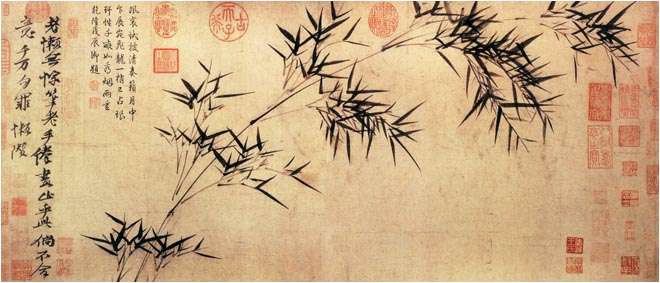|
�u���N�D�H ���ѥΤ��
 
- ���l
- 2320
- �n��
- 160144
- ����
- 75784
- �ʧO
- �k
- ���U�ɶ�
- 2005-7-19
|
444#
�j ��
�p �o���� 2012-7-25 19:25 �u�ݸӧ@��
    
Louis Vierne plays J. S. Bach: Durch Adams Fall ist ganz verderbt, BWV 637 1928 (Set 1080p for the best quality)
http://www.youtube.com/watch?v=Ezxzd8iCY6c&hd=1
Recorded at the Cathedral of Notre Dame, Paris, November 21, 1928.
84 �~�e嘅�W�ŵo�N����, �����N�o��!!!
http://en.wikipedia.org/wiki/Louis_Vierne
Louis Victor Jules Vierne (8 October 1870 �V 2 June 1937) was a French organist and composer.
Life
Louis Vierne was born in Poitiers, Vienne, nearly blind due to congenital cataracts, but at an early age was discovered to have an unusual gift for music. (At age two he heard the piano for the first time. The pianist played him a Schubert lullaby and he promptly began to pick out the notes of the lullaby on the piano.)
After completing school in the provinces, Louis Vierne entered the Paris Conservatory. From 1892, Vierne served as an assistant to the organist Charles-Marie Widor at the church of Saint-Sulpice in Paris. Vierne subsequently became principal organist at the cathedral of Notre-Dame de Paris, a post he held from 1900 until his death in 1937.
Vierne had a life that was physically and emotionally very difficult, with severe spiritual trials that are reflected in much of his music. His congenital cataracts did not make him completely blind, but he was what would be called today "legally blind." Early in his career, he composed on outsized manuscript paper, using "a large pencil" as his friend Marcel Dupré described. Later in life, as his limited sight continued to diminish, he resorted to Braille to do most of his work.
He was deeply affected by a separation and subsequent divorce from his wife, and he lost both his brother René and his son Jacques to the battlefields of World War I. Though he held one of the most prestigious organ posts in France, the Notre-Dame organ was in a state of disrepair throughout much of his tenure at the instrument. He eventually undertook a concert tour of North America to raise money for its restoration. The tour, which included major recitals on the famous Wanamaker Organ in Philadelphia and its smaller sister instrument, the Wanamaker Auditorium Organ in New York City,[1] was very successful, although the trip physically drained him.
A street accident in Paris caused him to badly fracture his leg, and it was briefly thought his leg would need to be amputated. The leg was saved, but his recovery, and the task of completely re-learning his pedal technique, took a full year during one of the busiest times of his life. Despite his difficulties, however, his students uniformly described him as a kind, patient and encouraging teacher. Among his pupils were Augustin Barié, Edward Shippen Barnes, Lili Boulanger, Nadia Boulanger, Marcel Dupré, André Fleury, Isadore Freed, Henri Gagnebin, Gaston Litaize, Édouard Mignan, Alexander Schreiner, and Georges-Émile Tanguay.
Vierne suffered either a stroke or a heart attack (eyewitness reports differ) while giving his 1750th organ recital at Notre-Dame de Paris on the evening of 2 June 1937. He had completed the main concert, which members of the audience said showed him at his full powers - "as well as he has ever played." Directly after he had finished playing his "Stele pour un enfant defunt" from his 'Triptyque' Op 58, the closing section was to be two improvisations on submitted themes. He read the first theme in Braille, then selected the stops he would use for the improvisation. He suddenly pitched forward, and fell off the bench as his foot hit the low "E" pedal of the organ. He lost consciousness as the single note echoed throughout the church. He had thus fulfilled his oft-stated lifelong dream - to die at the console of the great organ of Notre-Dame. Maurice Duruflé, another major French organist and composer of the time was at his side at the time of his death.
Music
Vierne was considered one of the greatest musical improvisers of his generation. His few improvisations that were preserved on early phonograph recordings sound like finished, polished compositions.
He had an elegant, clean style of writing that respected form above all else. His harmonic language was romantically rich, but not as sentimental or theatrical as that of his early mentor César Franck. Of all the great fin de siècle French organists, Vierne's music was perhaps the most idiomatic for his chosen instrument and has inspired most of the great Parisian organist-composers who followed him.
Carillon de Westminster.His output for organ includes six organ symphonies, 24 Fantasy Pieces (which includes his famous Carillon de Westminster), and 24 Pieces in Free Style, among other works. There are also several chamber works (sonatas for violin and cello, a piano quintet and a string quartet for example), vocal and choral music, and a Symphony in A minor for orchestra.
[ �����̫�� LouisLee �� 2012-7-25 19:28 �s�� ]
�����j���ؿ�: Piano

|